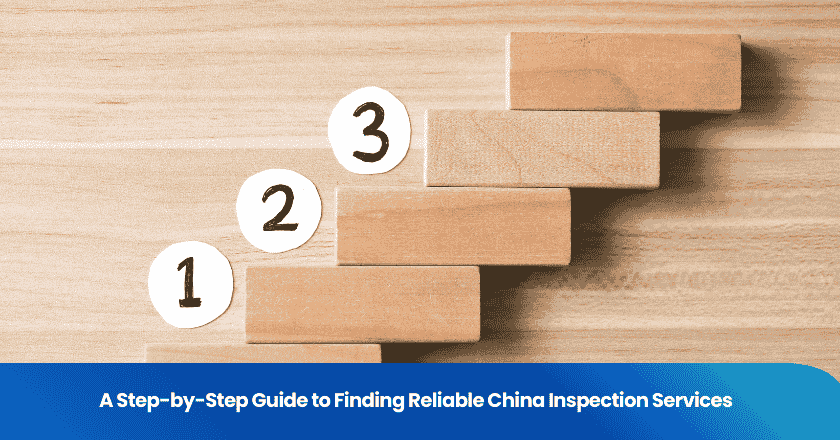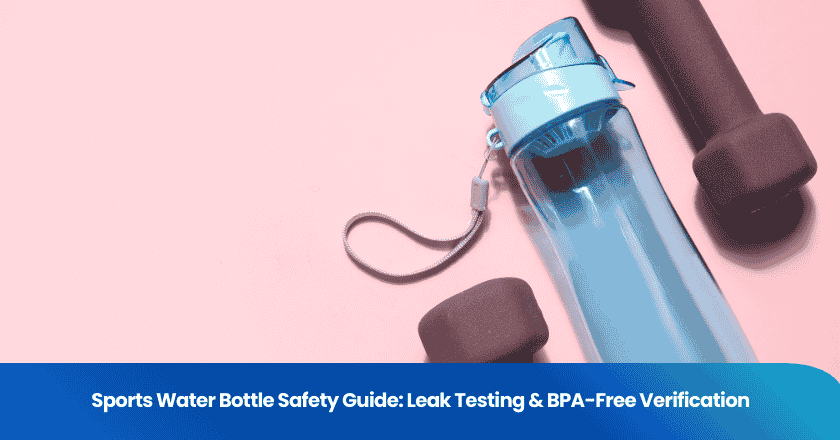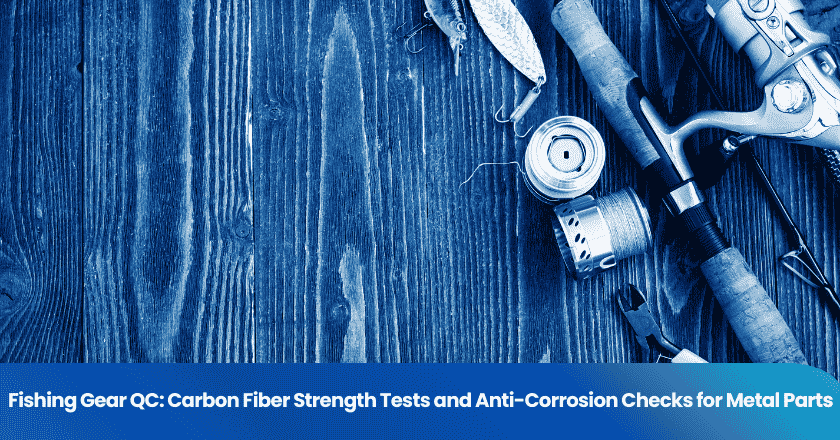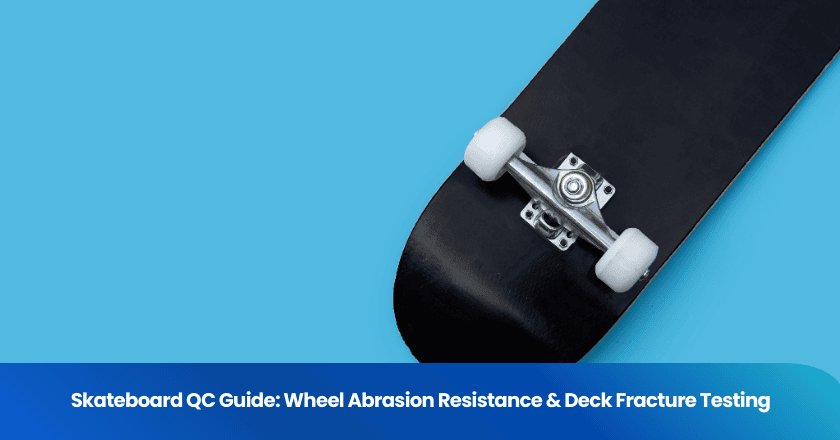
Choosing reliable China inspection services can determine the outcome of your international sourcing efforts. You face risks such as inconsistent product quality, regulatory issues, and communication barriers when dealing with unfamiliar suppliers. By selecting the right china inspection service, you minimize costly mistakes and protect your business reputation.
Key Takeaways
- Define your product needs clearly by listing specifications and quality standards to guide inspectors effectively.
- Choose the right inspection service type, such as pre-shipment or factory audit, based on your product and supplier risks.
- Research and verify inspection companies by checking their experience, certifications, and customer feedback.
- Compare quotes carefully, focusing on service scope and transparent pricing to get the best value.
- Communicate detailed expectations and monitor inspections closely to ensure quality and address issues quickly.
Define Needs
Product Requirements
You must start by identifying your product’s specific requirements. List the materials, dimensions, and functional features that matter most for your business. Clear product specifications help inspection teams understand what you expect. If you want to avoid misunderstandings, provide visual references or technical drawings.
Tip: Create a checklist for your product requirements before contacting any inspection service. This step streamlines the product quality inspection process and sets a strong foundation for quality control.
Quality Standards
Quality control depends on well-defined standards. You should reference international benchmarks such as ISO, ASTM, or your industry’s specific guidelines. These standards guide inspectors in evaluating your products.
Use a table to compare your required standards with those commonly accepted in China:
| Standard | Description | Accepted in China? |
|---|---|---|
| ISO 9001 | General quality management | Yes |
| ASTM D4169 | Packaging integrity | Yes |
| Custom Specs | Your unique requirements | Varies |
You must communicate your standards clearly. This ensures inspectors know what to look for and how to classify defects. Quality control teams rely on these standards to deliver consistent results.
Inspection Frequency
Decide how often you need inspections. Some businesses require quality control checks at every production stage. Others only need pre-shipment inspections.
- Consider these factors:
a. Product complexity
b. Supplier reliability
c. Order volume
Regular inspections reduce the risk of defects and help you maintain high standards. You should schedule inspections based on your business needs and supplier performance.
Note: Frequent quality control inspections can prevent costly mistakes and protect your reputation.
Service Types
Pre-Shipment
You need to schedule a pre-shipment inspection before your goods leave the factory. This process verifies that your products meet your specifications and quality standards. Inspectors check the quantity, appearance, and functionality of your items. You can catch defects early and avoid shipping problems. Pre-shipment inspections help you confirm that your order matches your requirements. If you sell on Amazon, you may request Amazon FBA inspections to ensure compliance with platform guidelines.
Factory Audit
A factory audit gives you a detailed look at your supplier’s operations. You can assess production capacity, working conditions, and management systems. This step helps you identify risks and verify that your supplier follows ethical practices. You should request a factory audit before placing large orders or starting long-term partnerships. Many businesses use a supplier audit to evaluate compliance with international standards. You can combine a factory audit with pre-production inspections to strengthen your quality control process. A factory audit also helps you monitor ongoing supplier performance.
Packaging Inspection
You must check packaging to protect your products during transit. Packaging inspection ensures that boxes, labels, and protective materials meet your requirements. Inspectors look for damage, incorrect labeling, and poor sealing. You can prevent returns and complaints by verifying packaging quality. Many companies include packaging inspection as part of their overall quality control strategy.
Third-Party vs First-Party
You can choose between a third-party inspection company and first-party inspections. A third-party inspection company operates independently and provides unbiased results. You gain objective feedback and reduce conflicts of interest. First-party inspections involve your own staff or the supplier’s team. This method may lack impartiality and expertise. Most importers prefer a third-party inspection company for critical checks. You can also use a supplier audit conducted by a third-party inspection company to ensure transparency. When you select a third-party inspection company, you benefit from professional standards and reliable reporting.
Tip: Combine factory audit, supplier audit, and third-party inspection company services for comprehensive quality control.
Research Companies
Company Profiles
You should begin your search for China inspection services by reviewing company profiles online. Use industry directories, trade platforms, and professional networks to identify reputable providers. Look for companies with proven expertise and experience in your product category. Examine their history, service coverage, and client portfolio. Reliable companies often highlight their inspectors qualifications and training, which helps you assess their ability to deliver accurate results.
Tip: Create a shortlist of companies that demonstrate expertise and experience in your industry.
Certifications
You need to verify certification and accreditation before making a decision. Check if the china inspection service complies with China’s regulations for testing, inspection, and certification bodies. Review certificates such as ISO 9001, CNAS, or other relevant standards. These credentials confirm that the provider follows ethical practices and compliance requirements.
| Certification | Description | Importance |
|---|---|---|
| ISO 9001 | Quality Management | Ensures consistency |
| CNAS | National Accreditation | Validates authority |
| Industry-Specific | Specialized Standards | Confirms expertise |
You should request copies of certifications and accreditation documents to confirm authenticity.
Customer Insights
Gather customer insights to evaluate the reputation of each provider. Read reviews on trade forums, social media, and independent platforms. Ask for references from previous clients who used China inspection services. Pay attention to feedback about expertise and experience, responsiveness, and reporting quality.
Note: Positive customer insights often indicate strong ethical practices and compliance with industry standards.
You can use these steps to select a provider that meets your requirements and delivers reliable inspection results.
Compare Costs
Request Quotes
You should always request quotes from several inspection service providers. This approach helps you understand the market rate and prevents you from overpaying. When you reach out, provide detailed information about your product, inspection location, and required services. Clear communication ensures you receive accurate and comparable quotes.
Tip: Ask each provider to break down their quote by service type, number of inspectors, and inspection duration. This transparency makes it easier to compare offers.
Service Scope
Not all inspection services include the same tasks. You need to review the scope of each quote carefully. Some providers may offer only basic checks, while others include packaging inspection, factory audits, or even follow-up visits. Make a checklist of your required services and match it against what each provider offers.
- Key points to compare:
1. Number of inspection points covered
2. Inclusion of detailed reports and photos
3. Availability of on-site re-inspection if issues arise
A clear understanding of the service scope helps you avoid hidden costs and ensures you get value for your investment.
Pricing Structure
Inspection companies in China usually charge by the man-day. Typical rates range from $149 to $320 per man-day. The final price depends on factors such as product complexity, inspection location, and the number of units checked.
| Service Type | Typical Rate (USD/man-day) |
|---|---|
| Pre-Shipment | $149 - $320 |
| Factory Audit | $200 - $320 |
| Packaging Inspection | $149 - $250 |
You should confirm whether the quote includes travel expenses, report fees, or additional charges for urgent requests. Transparent pricing helps you budget accurately and prevents surprises later.
Note: Comparing both cost and service scope gives you a complete picture and supports better decision-making.
Communicate Clearly
Clear communication forms the backbone of successful quality control. You must set precise expectations with your inspection service to avoid misunderstandings and costly errors.
Specifications
You should provide detailed product specifications before the inspection begins. List every critical detail, including dimensions, materials, colors, and functional features. Attach technical drawings or photos to clarify your requirements. When you supply comprehensive information, inspectors know exactly what to check.
Tip: Use a checklist to organize your specifications. This tool helps you track each requirement and ensures nothing gets missed.
Quality Criteria
Define unacceptable quality criteria in advance. You need to specify what defects or deviations you will not tolerate. For example, you might reject products with scratches, incorrect labeling, or missing components.
- Common quality criteria to include:
1. Surface finish
2. Packaging integrity
3. Functionality tests
4. Label accuracy
A clear list of unacceptable issues helps inspectors classify defects and report findings accurately. You improve customer service and communication by making your standards visible and actionable.
Reporting
Set expectations for transparency and quick reporting. Ask your inspection service to deliver detailed reports with photos, measurements, and defect classifications. Request a sample report before the inspection to understand the format and level of detail.
| Report Element | Description |
|---|---|
| Photos | Visual proof of findings |
| Measurements | Data on product accuracy |
| Defect Summary | Classification of issues |
| Recommendations | Next steps for resolution |
You should also agree on a timeline for report delivery and follow-up actions. Fast and clear reporting allows you to make decisions quickly and maintain control over your supply chain.
Monitor Process
Scheduling
You need to set a clear inspection schedule with your chosen service provider. Start by confirming production timelines with your supplier. Share these dates with your inspection team as early as possible. This step helps you avoid last-minute changes and ensures inspectors arrive when needed.
- Key actions for effective scheduling:
1. Confirm production milestones with your supplier.
2. Book inspection dates in advance.
3. Allow time for re-inspection if issues arise.
Tip: Use a shared calendar or project management tool to track inspection dates and deadlines. This approach keeps everyone aligned and reduces the risk of missed inspections.
On-Site Checks
You should monitor on-site checks closely to ensure thorough inspections. Request real-time updates or photos from the inspection team during their visit. This transparency allows you to address problems immediately if inspectors find defects or deviations.
- Inspectors typically review:
1. Product quantity and quality
2. Packaging and labeling
3. Compliance with your specifications
Ask for a summary of findings before the team leaves the site. Quick feedback helps you make timely decisions and maintain control over your supply chain.
Collaboration
Strong collaboration between you, your supplier, and the inspection team leads to better results. Communicate openly about expectations, challenges, and any changes in requirements. Encourage your supplier to support the inspection process by providing access to facilities and necessary documents.
Note: Regular communication builds trust and helps resolve issues faster.
You can schedule follow-up meetings to review inspection outcomes and plan corrective actions if needed. When you work as a team, you improve product quality and reduce the risk of costly mistakes.
Review Results
Inspection Reports
You receive an inspection report after each quality check. This document gives you a clear overview of the inspection process and findings. You should review the inspection report carefully. Look for details about product quantity, appearance, measurements, and any deviations from your requirements. Most inspection reports include photos, checklists, and comments from the inspectors. These elements help you verify that the inspection covered all critical points.
Tip: Compare the inspection report with your original product specifications. This step helps you spot any inconsistencies quickly.
Defect Classification
You need to understand how inspectors classify defects. Most inspection reports group defects into categories such as critical, major, or minor. Critical defects can make products unsafe or unusable. Major defects affect function or appearance but may not pose safety risks. Minor defects are small issues that do not impact product use.
l Common defect categories:
1. Critical: Safety hazards, regulatory violations
2. Major: Functional failures, visible damage
3. Minor: Cosmetic flaws, slight color variations
You should focus on the number and type of defects reported. High numbers of critical or major defects signal serious problems. You may need to halt shipments or request corrective actions.
Feedback
You play an active role in the feedback process. After reviewing the inspection reports, share your comments and concerns with the inspection team and your supplier. Clear feedback helps everyone understand your expectations. If you find non-conformities, request corrective actions before approving shipment.
Note: Timely feedback and follow-up ensure continuous improvement in your supply chain.
You can also use feedback sessions to discuss ways to prevent similar issues in future orders.
Choosing China Inspection Services
Quality Control Inspection Service Options
You face many choices when selecting a quality control inspection service for your business. Each option offers unique advantages and fits different needs. You must evaluate these options to ensure you receive reliable quality control inspection at every stage of your supply chain.
- Third-Party Quality Control Inspection Service
You can hire independent inspectors who specialize in quality control. These professionals provide unbiased assessments and follow strict industry standards. You gain objective feedback and reduce the risk of conflicts of interest.
- First-Party Quality Control Inspection Service
You may use your own staff or rely on your supplier’s team for inspections. This approach gives you direct control but may lack impartiality. You must train your team to follow consistent quality control procedures.
- On-Site Quality Control Inspection Service
You can request inspectors to visit the factory or warehouse. They check products, packaging, and labeling before shipment. On-site inspections help you catch defects early and prevent costly returns.
- Remote Quality Control Inspection Service
You may choose remote inspections using video calls or digital reporting. This method saves time and reduces travel costs. You must ensure inspectors have access to clear visuals and accurate data.
Tip: Match the inspection service option to your product type, supplier reliability, and order volume. You improve your results by choosing the right quality control inspection service for each situation.
| Inspection Service Option | Advantages | Best Use Case |
|---|---|---|
| Third-Party | Unbiased, professional | High-value or complex orders |
| First-Party | Direct control | Small batches, trusted suppliers |
| On-Site | Immediate feedback | Time-sensitive shipments |
| Remote | Cost-effective, flexible | Routine checks, low-risk items |
You must compare these options and select the one that delivers reliable quality control inspection for your business.
Ensuring Reliability
You need to ensure that your chosen China inspection services deliver consistent and reliable quality control. Diligence and compliance play a critical role in this process. You must take several steps to verify reliability and maintain high standards.
1. Check Credentials and Compliance
You should confirm that your china inspection service holds valid certifications and follows local regulations. Reliable quality control inspection depends on inspectors who understand industry standards and legal requirements.
2. Review Track Record
You must examine the provider’s history of successful inspections. Look for evidence of expertise in your product category. Reliable quality control inspection comes from teams with proven experience.
3. Set Clear Expectations
You should communicate your quality control criteria and reporting needs before inspections begin. Detailed instructions help inspectors deliver accurate results and reduce misunderstandings.
4. Monitor Performance
You need to track inspection outcomes over time. Review reports for consistency and thoroughness. Reliable quality control inspection shows up in detailed documentation and prompt feedback.
5. Request Corrective Actions
You must act quickly if inspectors find non-conformities. Ask your provider to address issues and verify improvements. This step strengthens your quality control and protects your business reputation.
Note: Diligence and compliance ensure that your quality control inspection service meets your standards and supports long-term success.
You improve your supply chain by following these steps. You reduce risks and maintain product quality. Reliable quality control inspection builds trust with your customers and partners.
How to Select the Right China Inspection Services
You must summarize your approach to choosing the best China inspection services and quality control inspection service for your business. Follow these steps for effective selection:
1. Define your product requirements and quality control standards.
2. Research available China inspection services and compare their expertise.
3. Request quotes and review the scope of each quality control inspection service.
4. Communicate your expectations and unacceptable quality criteria.
5. Monitor the inspection process and review results for reliability.
6. Provide feedback and request corrective actions when needed.
You reinforce the importance of diligence and compliance at every stage. You protect your business and ensure reliable quality control. You build a foundation for successful sourcing and long-term growth.
You now have a clear, step-by-step approach to finding reliable China inspection services. Compare costs, verify the scope of each service, and communicate your needs clearly. Use this guide as your checklist for future sourcing and quality control decisions.
- Prepare your product requirements
- Shortlist inspection companies
- Reach out for quotes and details
Take action today to protect your business and ensure consistent product quality.
FAQ
What documents do you need for a China inspection service?
You should prepare product specifications, order details, and quality standards. Include technical drawings or photos if possible. Clear documentation helps inspectors understand your requirements and deliver accurate results.
How long does a typical inspection take?
Most inspections take one day per site. Complex products or large orders may require more time. You should confirm the schedule with your inspection provider before production begins.
Can you request a re-inspection if issues are found?
Yes. You can request a re-inspection if inspectors find defects or non-conformities. This step ensures your supplier addresses problems before shipment.
What is included in a standard inspection report?
A standard report includes photos, measurements, defect classifications, and recommendations. You receive a summary of findings and suggestions for corrective actions.
How do you choose between third-party and first-party inspections?
You should consider your product value, supplier reliability, and need for impartiality. Third-party inspections offer unbiased results. First-party inspections give you direct control but may lack objectivity.
Grow your business with TradeAider Service
Click the button below to directly enter the TradeAider Service System. The simple steps from booking and payment to receiving reports are easy to operate.



